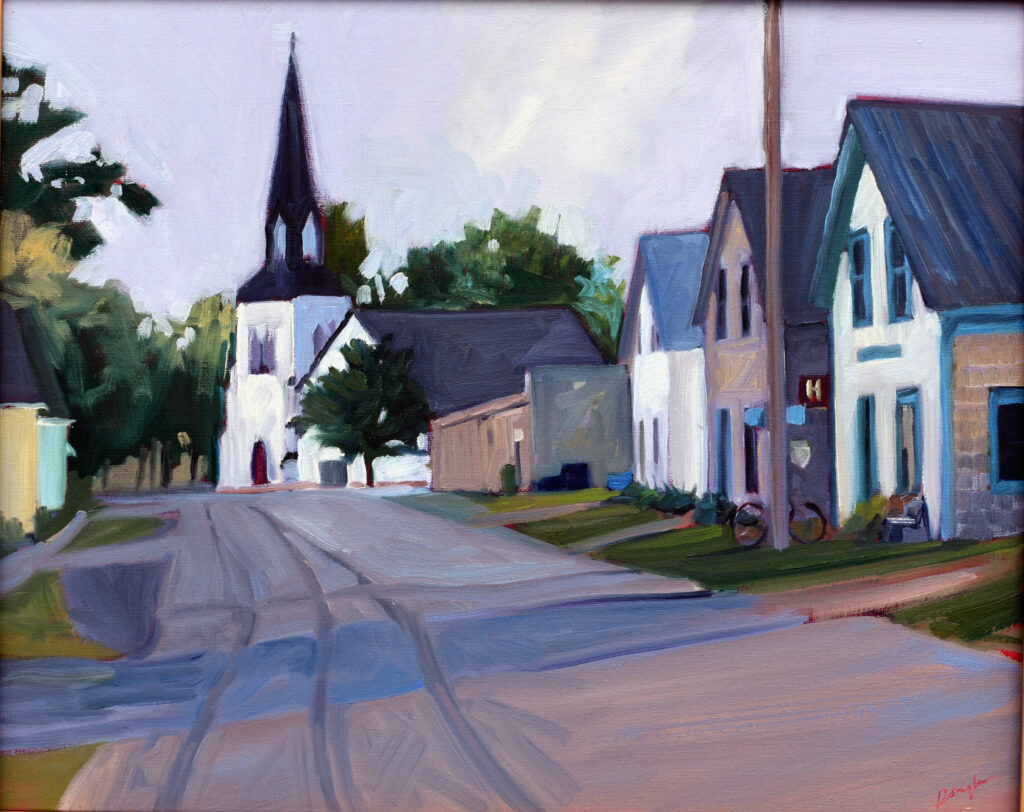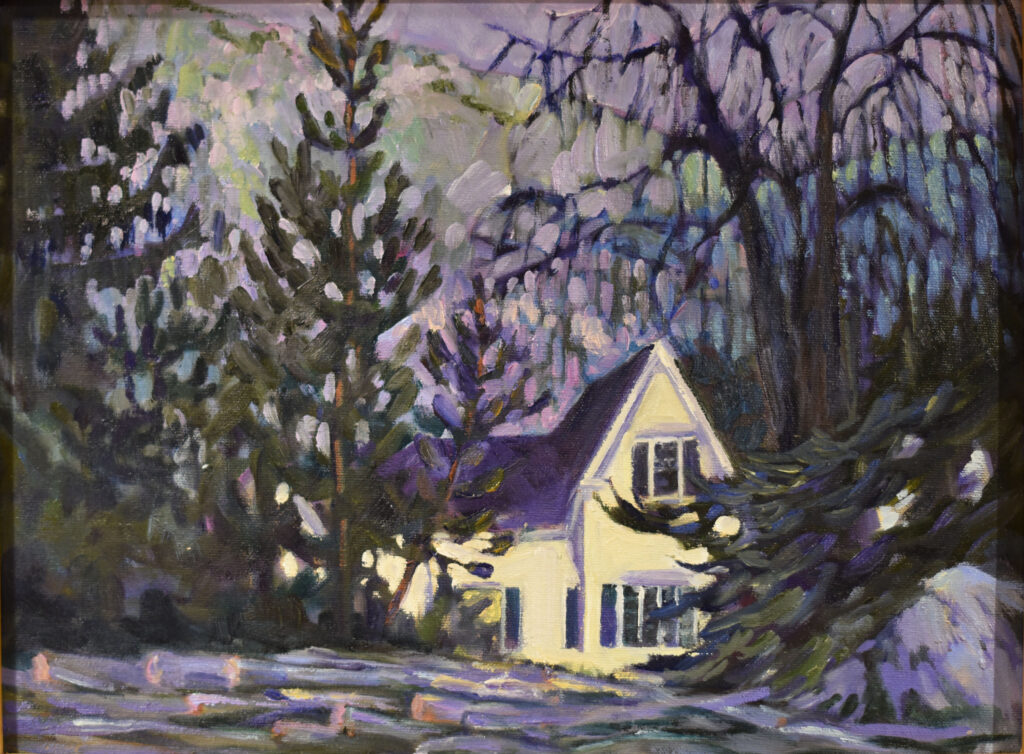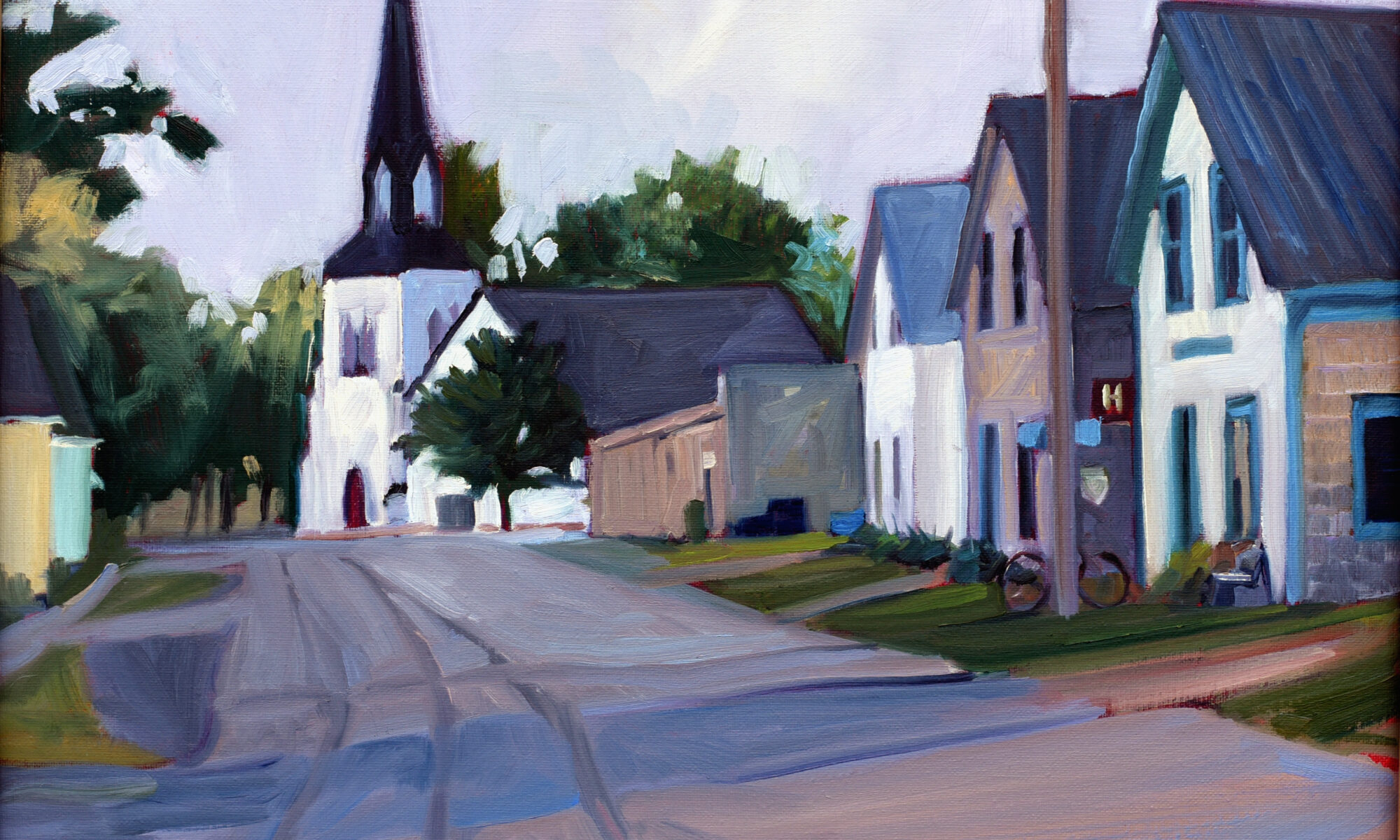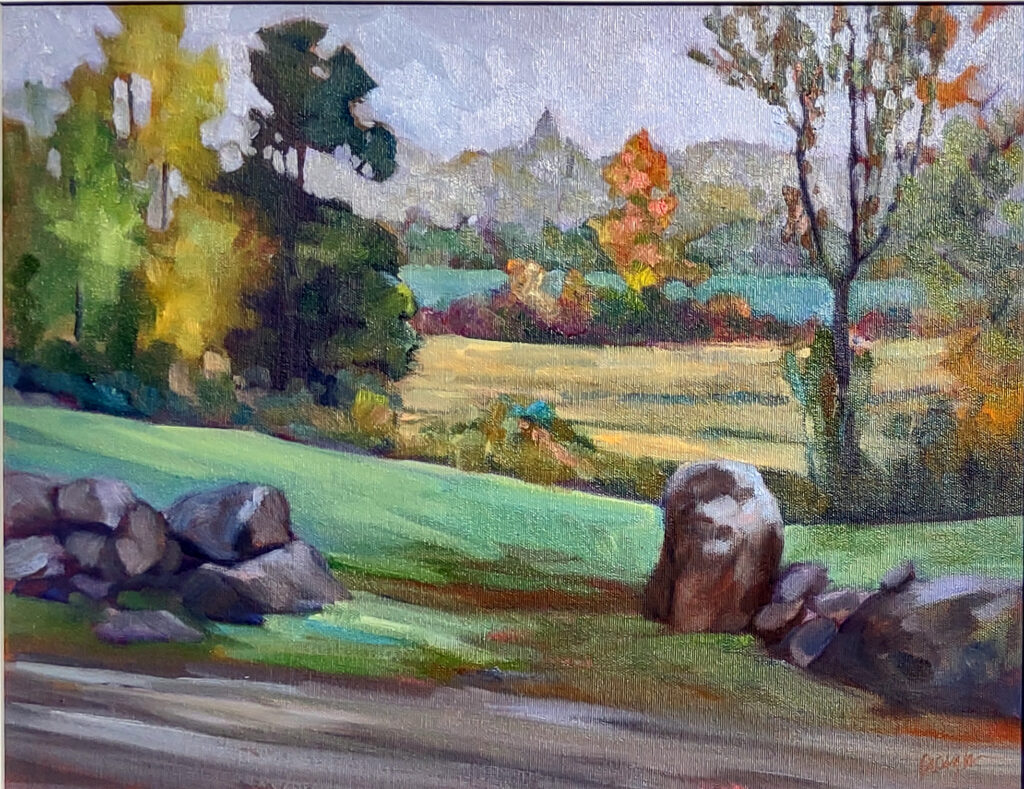Chemistry—which I took fifty years ago—was my worst subject, and now I spend much of my time thinking about it. Life always gets the last laugh.
“How long does oil paint take to dry?” is one of the most frequent questions I’m asked. I made this video to answer the question. It’s part of The Heart of the Painting, step six of Seven Protocols for Oil Painters.
For those of you playing along at home, I recorded the video for step seven (about final finishes and flourishes) before I left for Britain. Laura is editing it right now. When it’s done, you’ll be able to learn to paint step-by-step at your own pace and you’ll no longer need me.
I plan to edit this material into book form when I’m done. No ‘how to paint’ book can possibly be as complete as these interactive courses, but a book is easier to curl up with.

So, how long does oil paint take to dry?
New painters want to know if they must let their paint dry between layers. It’s not necessary if you adhere scrupulously to the ‘fat over lean’ rule. Keep those bottom layers thin and you can paint right into them.
Paint is a simple material, just pigment particles suspended in a binder. So why do some paintings break down? Much of that is down to experimenting with additives. Laying new materials in a pool of drying oils is a recipe for long-term decay. Our museums are full of 20th century paintings with premature cracking. In oil painting, conservative skepticism is sensible.

Ignoring the ‘fat over lean’ rule is another cause of failed, cracking paintings. The most common solvent today is odorless mineral spirits (OMS) which breaks down the oil and then evaporates. In the bottom layer, that can leave a touch-hard finish in as little as half an hour. That surface can easily be broken if you need to edit. However, in the squishy top layers, OMS can wreck your painting.
I wish someone had told me this when I was younger. I struggled with paintings that looked great when wet but grey when dry, and which aged terribly even in the short time I knew them.
Oil paints don’t dry, they absorb oxygen from the air to harden. What’s oxidizing isn’t the pigment but the oil between the pigment particles. Different pigments have different particle sizes, so some colors dry faster than others. I’ve outlined the dry times in the video, but the most important one to remember is titanium white, which is a slow dryer. That’s one reason it doesn’t belong in your grisaille.
The ‘fat’ in paint is siccative oil, which in most cases is linseed oil. It’s so harmless it’s edible. The downside of linseed oil is its tendency to yellow over time, so other oils, like walnut or safflower, have been substituted. They, sadly, are more prone to cracking. It’s an imperfect world, isn’t it?
Alkyd paints and mediums are made from oil-modified resin treated with alcohol and acid. Their main advantage is their dry time. They can give you a touch-dry surface in 24 hours. You can use an alkyd medium with traditional oil paint. The granddaddy of these was Winsor & Newton’s Liquin, developed in the 1960s. In general, alkyd resin doesn’t hold as much pigment as traditional oils do. I don’t use them because I generally seek a slower dry time, and I’m put off by the smell.
How long does oil paint take to dry? It depends on many factors, but as long as you follow the ‘fat over lean’ rule, it’s not important.
I’m in Britain on another lovely, long, blister-inducing hike. I’ve turned my phone off and while I’m gone, Laura will be running the office. Just email me as usual if you have questions or problems registering for a class or workshop. (Who am I kidding? She fixes all that stuff anyway.)
My 2024 workshops:
- Sea & Sky at Schoodic, August 4-9, 2024.
- Find your authentic voice in plein air: Berkshires, August 12-16, 2024.
- Art and Adventure at Sea: Paint Aboard Schooner American Eagle, September 15-19, 2024.
- Immersive In-Person Workshop: Rockport, ME, October 7-11, 2024.



That is such a lovely streetscape at the top of this post. I have been through so many small towns like this, and I love them. You can find them everywhere — there are even towns in New Jersey like this, if you go far enough.
I would like to retire to a town like this. My sister lives in my grandmother’s house in a town called Kempton, IN, pop. 400, which is just about exactly the same as it was 40 years ago.
The chief asset of Kempton is its black farm soil. That, and it is not on a highway, but is between 3 highways, so you can get places. But you do have to drive.
While I was listening to the video I was wondering how this information affects your painting practice. I believe I told you my late husband painted oils. And he never let anything stop him, if the paint was wet he would just paint over it. He never used anything but the basics — paint, linseed oil, and turpentine.
But, I took the time to read the post, and there it is explained very well.